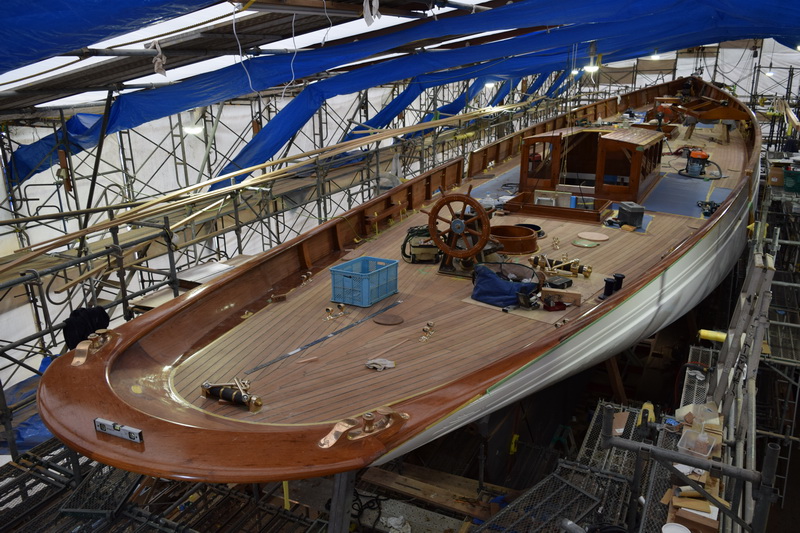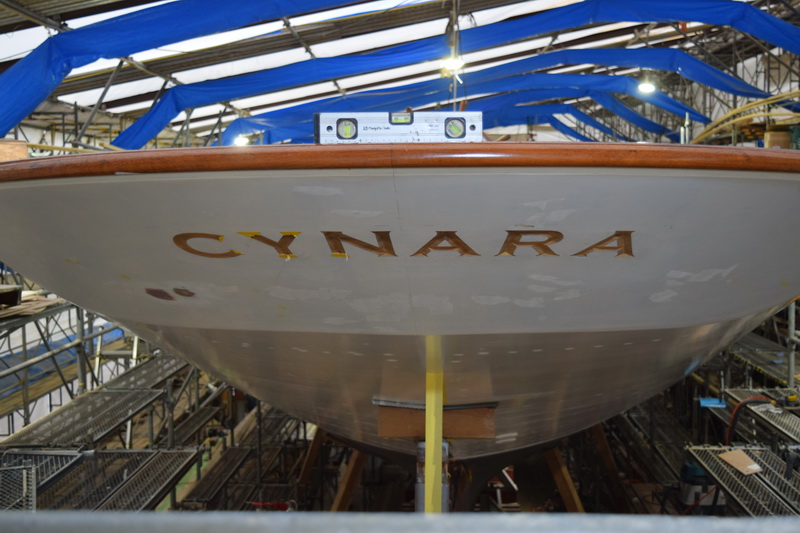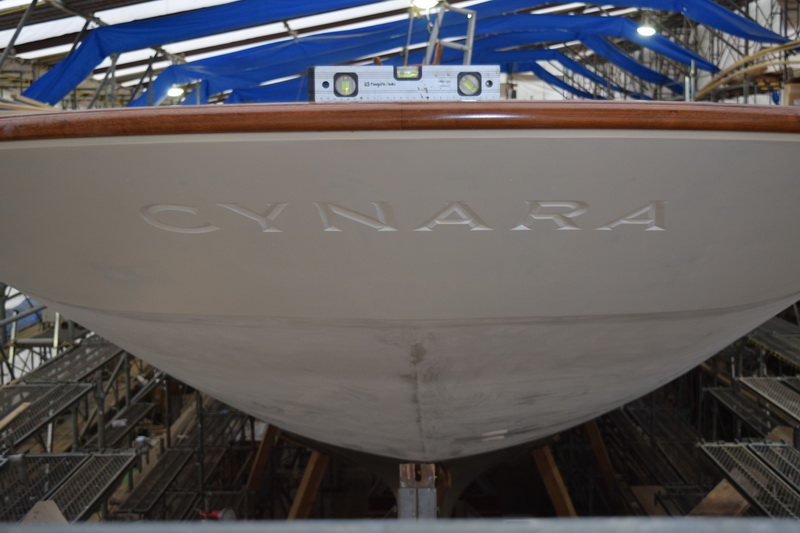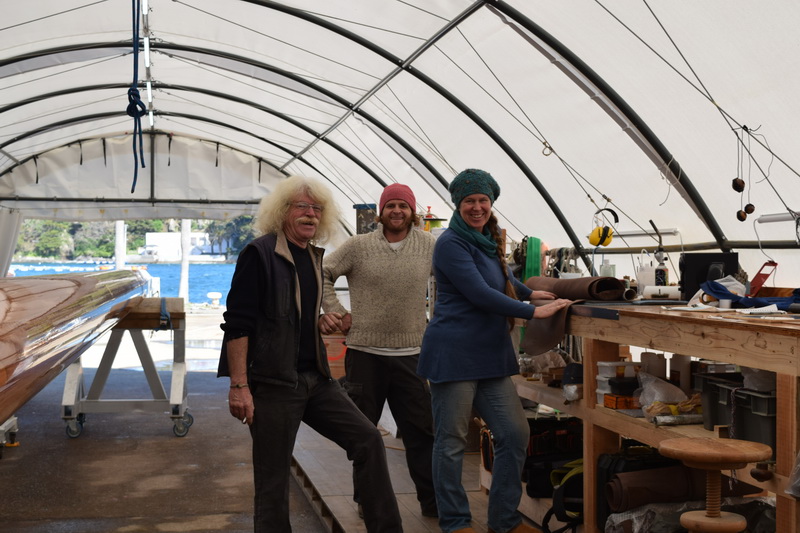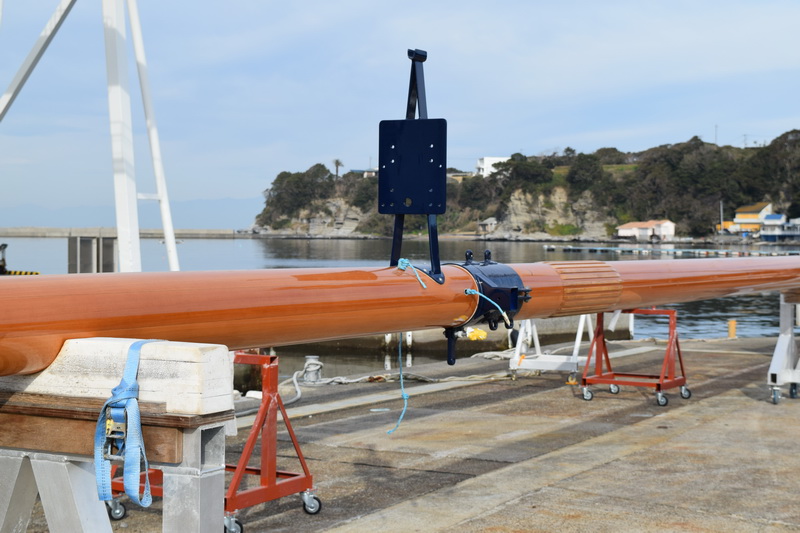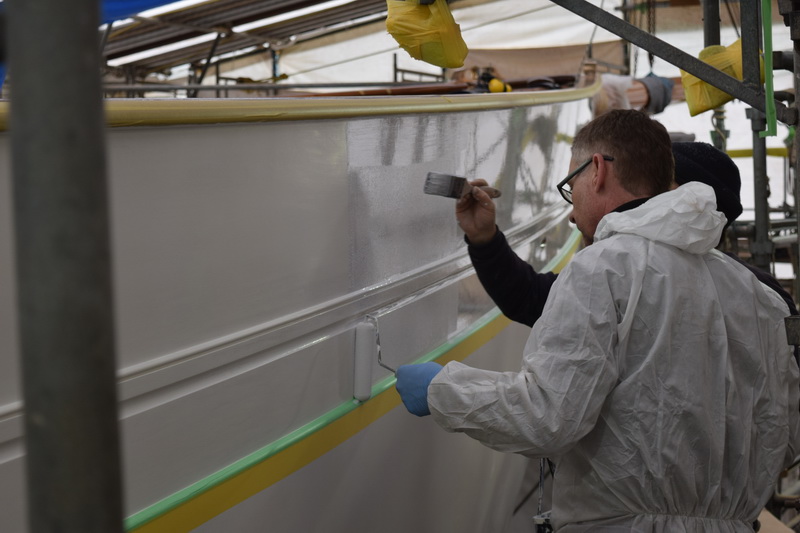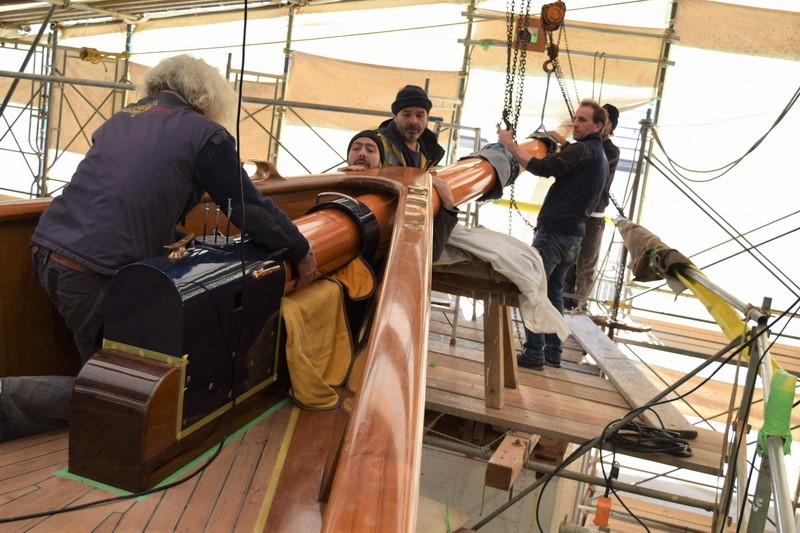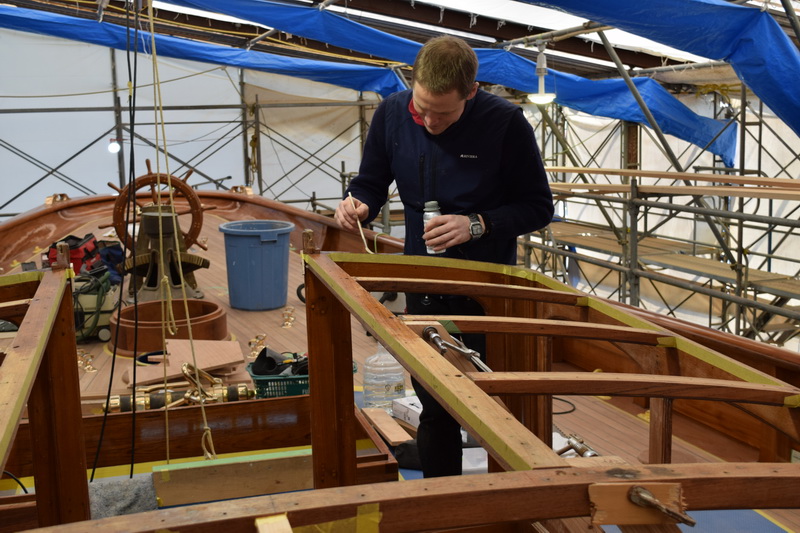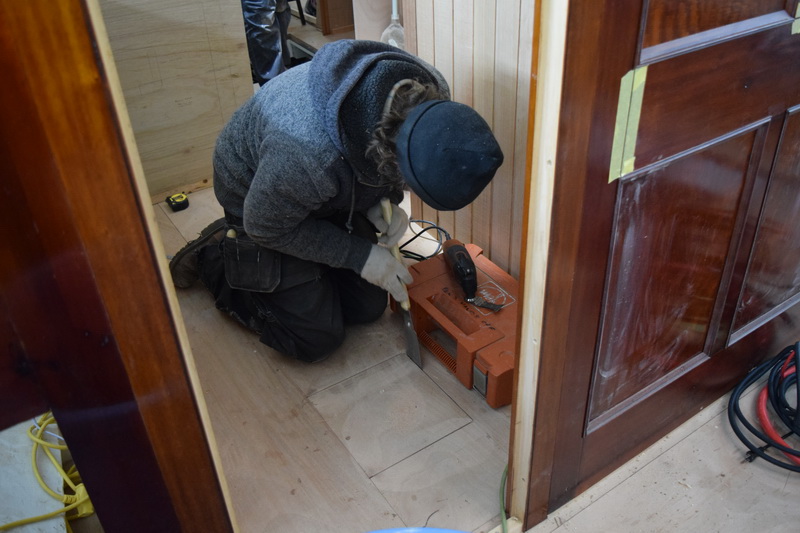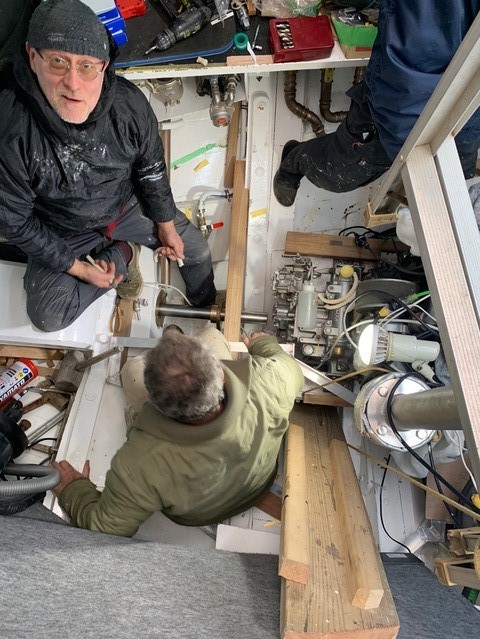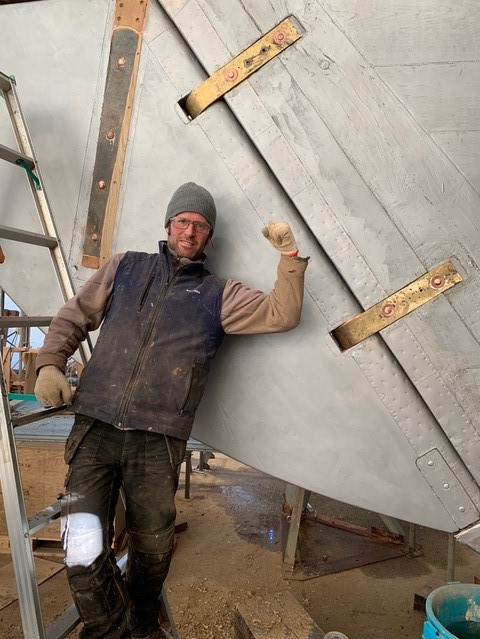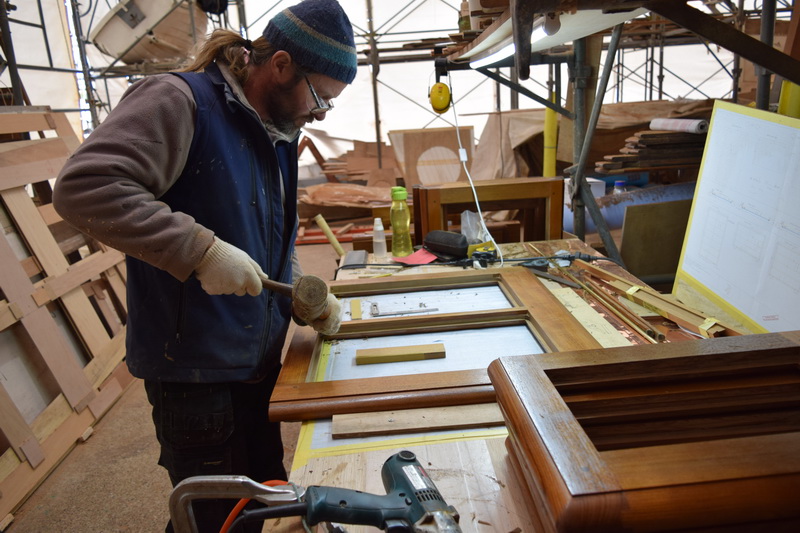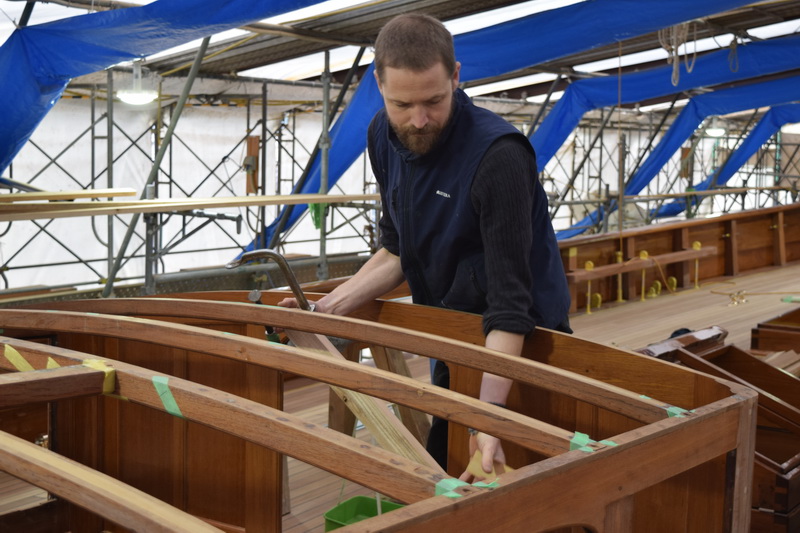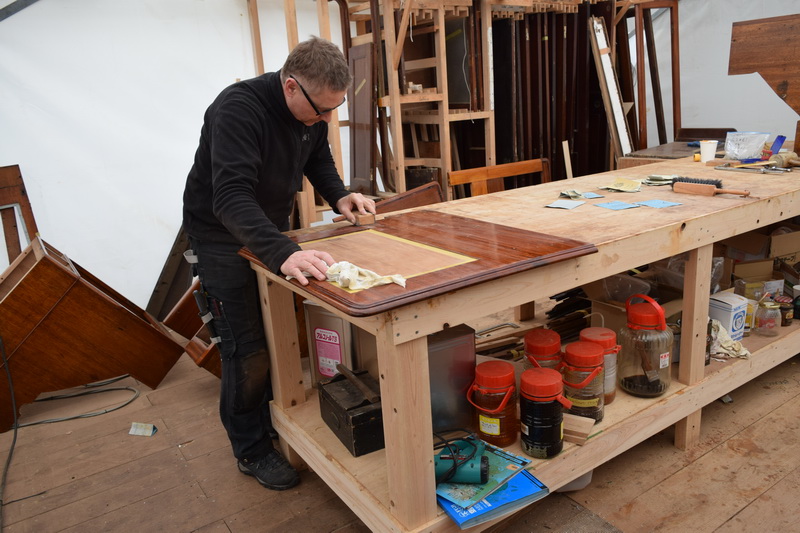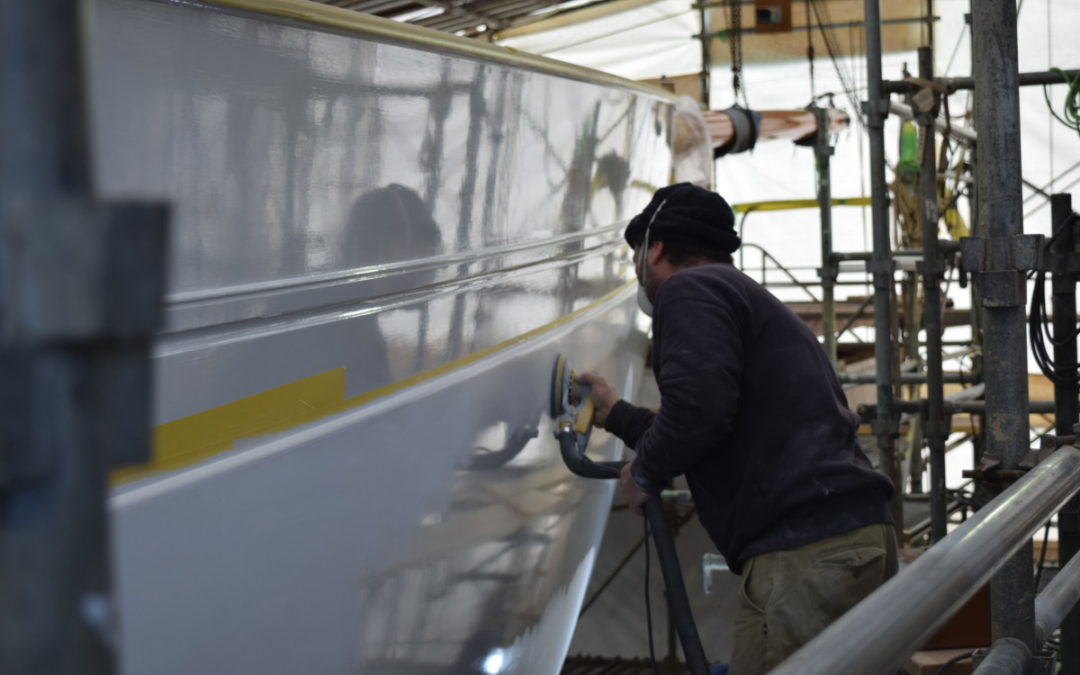
Blog — Tuesday, 25 February, 2020
Sanding and application of the hull’s top coat continued this week—the third and last coat! Nico and Bill were working on the lower scaffold level; Jesper (with a roller) and Paul (with a brush) were in charge of the upper level.
The focus of interior work has been on the mahogany paneled corridor. Benjamin and Toshi have also been making replacements for the furniture and fittings, while Lewis and John have been stripping, restoring and retouching many pieces of the original mahogany. While much of the visible polished woodwork of the interior is original, the skeleton on which it is installed are new, created from Japanese cedar and Canadian pine.
Up on deck, Mattis is continuing with work on the deck house roof. Temporary diagonal supports are keeping its shape while waiting for the adhesives to dry. The original frame work is locked together with mortice and tenons with wooden pegs through the tenon, the same method Camper and Nicholsons used during construction more than 90 years ago. The first layer was of the original teak. That was topped by a thin layer of fiberglass cloth and a stiff mix of epoxy for a water-tight strong bond with a top layer of new teak. The original was calico or canvas soaked in lead paint.
Riggers Chuck and Nat have been preparing the spars, while discussing the fitting of the various components related to the masts and jig with the shipwrights. With the electrical and mechanical engineers, they’ve also been installing the wiring inside the masts for the nautical instruments, lights, etc.
Outside the tent, a path has been cleared on the dock, and the parts for the cradle that will carry Cynara to the water have started to arrive. After three long years, she will soon be back in the water.
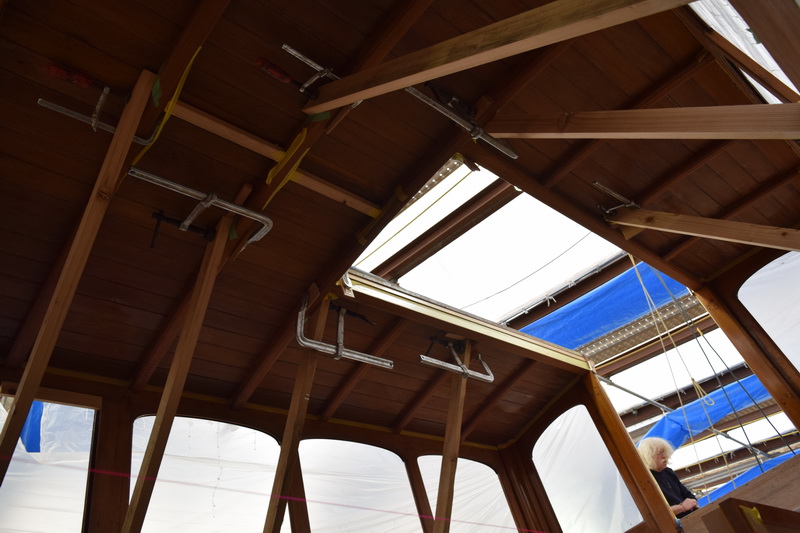
The view from inside the deck house. Except for the temporary diagonal supports, everything you can see is original.
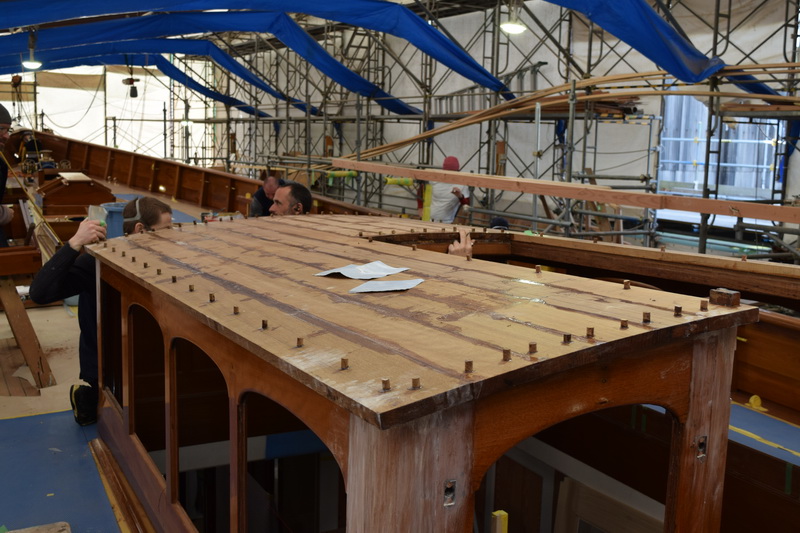
The view from the outside: New teak planking on the cabin top. The plugs will eventually be cut flush with the surface.

More of the mahogany walls of the interior. Putting all the pieces for the walls and furniture and other fittings in place is like a complex puzzle.


